On a wooded lake shore in northern Japan, the government is building a modernist shrine that has divided the indigenous Ainu community whose vanishing culture it was designed to celebrate.
At a cost so far of US$220 million, Japan’s “Symbolic Space for Ethnic Harmony” is on track to open in time for the 2020 Olympics, part of a drive by Prime Minister Shinzo Abe to draw millions of foreign visitors to Japan and to the northern city of Sapporo, where the Olympic marathon will be run.
Also known as Upopoy or “singing together” in the Ainu language, the complex will include a museum, a replica of an Ainu village, many of which Japan destroyed in its 19th century colonization of Hokkaido, and a memorial housing the bones of hundreds of Ainu whose remains were sent to universities in the 20th century.
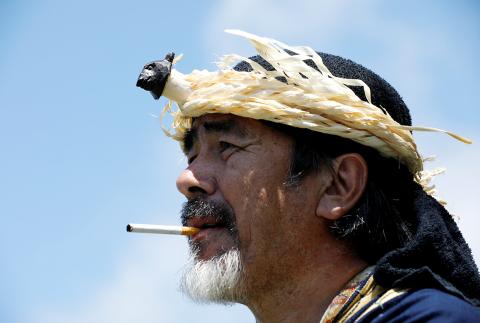
Photo: REUTERS
For some surviving Ainu, whose exact numbers are unknown, the project underscores how Japan has failed to come to terms with its history — despite more than a decade of deliberation on how Tokyo could meet its commitments to an indigenous group it officially recognized in 2008.
Some Ainu worry the new museum complex is mostly meant to burnish Japan’s international standing ahead of the Olympics.
“I think it’s possible it could end up becoming a theme park,” said Ainu tattoo artist Mai Hachiya. “People would come to see the dancing and other performances. It would be like a zoo.”
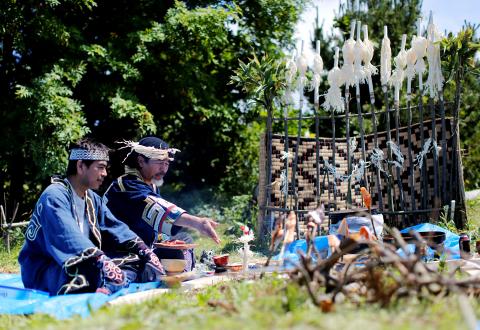
Photo: REUTERS
‘SILENT AINU’
Scholars say the Ainu settled in Japan’s northernmost island and across Sakhalin, Russia, by the 1300s. They hunted, fished, practiced an animist religion and spoke a language unrelated to any other.
Japan took control of Hokkaido by force in the 19th century and made it a colony. After opening it to Japanese settlers, it forced the Ainu, which it labeled “former aborigines,” to assimilate.
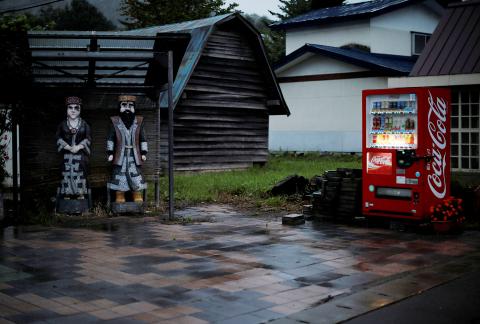
Photo: REUTERS
A 2017 survey counted just over 13,000 Ainu in Hokkaido. The actual number is estimated to be much higher, because many Ainu fear identifying as other than Japanese and have moved to different parts of the country.
Ainu children are half as likely to go to college as other Japanese and average household earnings are significantly lower, official data show.
“Society was not accepting of the Ainu, and it still isn’t,” said Mai Ishihara, an anthropologist at Hokkaido University. “There are still many people who keep their Ainu identity secret from their children.”
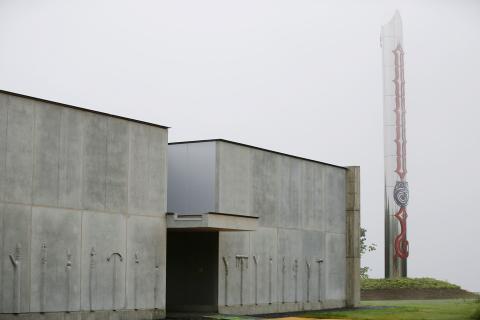
Photo: REUTERS
Ishihara discovered at age 12 that her maternal grandmother was Ainu. She describes people detached from their roots as “silent Ainu.”
In 2009, after signing the UN Declaration on the Rights of Indigenous Peoples, Japan’s government began considering how to establish a new policy for the Ainu. Early proposals zeroed in quickly on the creation of the government-funded “Symbolic Space” now taking shape on the shore of Lake Poroto near the town of Shiraoi in Hokkaido.
In consultations that concluded in early 2018, Ainu representatives asked for legal rights to state-owned land, more funding for teaching Ainu culture and language and an apology from Japan’s government.
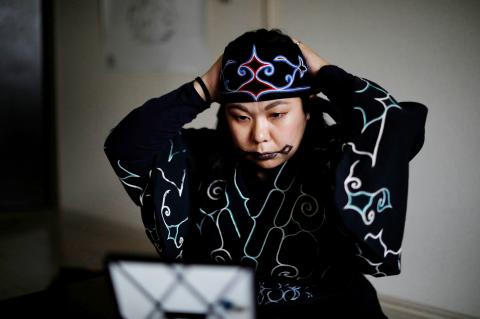
Photo: REUTERS
None of those proposals was considered.
“We can’t do something if it is not achievable,” said Hiroshi Koyama, the official in charge of Japan’s Comprehensive Ainu Policy Office.
Giving back forest where Ainu once hunted and foraged, he said, would “be hard for the Japanese people to accept.” And he added that an apology would be uncomfortable for many Japanese, as well as an insult to the Japanese settlers who built modern Hokkaido.
“It would focus people’s attention on the bad things that happened and not the future,” he said.
VERGE OF EXTINCTION
Ainu hunter Atsushi Monbetsu, 36, sees Tokyo’s actions, including the ethnic-harmony park, as “useless.” Discrimination as a child made him decide to embrace his heritage and live as a hunter, he said.
“It would have been nice if the government had given us a place where we could carry out our traditional rites,” said Monbetsu, who burns birch shavings in a prayer to the Ainu gods before stalking deer with a shotgun.
A group representing about 2,000 Ainu supports Abe’s project, arguing it will provide economic benefits from tourism and a forum focusing on Ainu culture and arts. Five of the 20 curators hired for the new museum are Ainu.
At a former school a short drive from the museum construction site, curators are preparing exhibits. Traditional Ainu coats hang in abandoned classrooms with knives, ceremonial sticks and heavy beaded necklaces laid out on tables. In the gymnasium, dancers practice next to stuffed bears and Ainu handicrafts.
With pictures of smiling performers, a draft brochure describes Ainu hunter-gatherer culture as “on the verge of extinction.” It makes no reference to Japanese policies that forced Ainu to adopt Japanese names, speak Japanese and outlawed practices such as a traditional form of tattooing Hachiya is trying to revive.
Hachiya, 36, who is also a singer, has been asked to practice a routine with other Ainu performers that may be included in the Olympics opening ceremony
in Tokyo.
“I think Hokkaido is a Japanese colony,” she said. “That’s a hard thing to say, but if you look back on what was done, that’s what you have to conclude.”
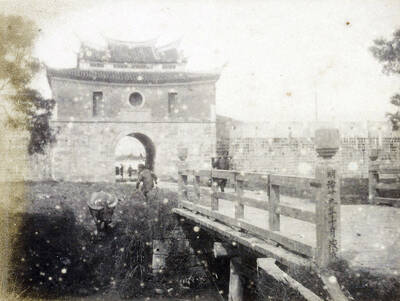
June 9 to June 15 A photo of two men riding trendy high-wheel Penny-Farthing bicycles past a Qing Dynasty gate aptly captures the essence of Taipei in 1897 — a newly colonized city on the cusp of great change. The Japanese began making significant modifications to the cityscape in 1899, tearing down Qing-era structures, widening boulevards and installing Western-style infrastructure and buildings. The photographer, Minosuke Imamura, only spent a year in Taiwan as a cartographer for the governor-general’s office, but he left behind a treasure trove of 130 images showing life at the onset of Japanese rule, spanning July 1897 to
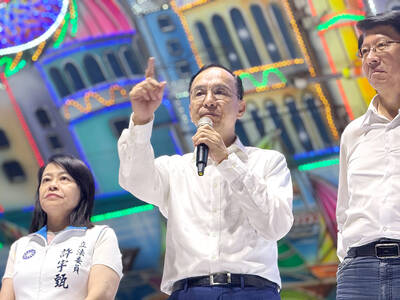
In an interview posted online by United Daily News (UDN) on May 26, current Chinese Nationalist Party (KMT) Chairman Eric Chu (朱立倫) was asked about Taichung Mayor Lu Shiow-yen (盧秀燕) replacing him as party chair. Though not yet officially running, by the customs of Taiwan politics, Lu has been signalling she is both running for party chair and to be the party’s 2028 presidential candidate. She told an international media outlet that she was considering a run. She also gave a speech in Keelung on national priorities and foreign affairs. For details, see the May 23 edition of this column,

At Computex 2025, Nvidia CEO Jensen Huang (黃仁勳) urged the government to subsidize AI. “All schools in Taiwan must integrate AI into their curricula,” he declared. A few months earlier, he said, “If I were a student today, I’d immediately start using tools like ChatGPT, Gemini Pro and Grok to learn, write and accelerate my thinking.” Huang sees the AI-bullet train leaving the station. And as one of its drivers, he’s worried about youth not getting on board — bad for their careers, and bad for his workforce. As a semiconductor supply-chain powerhouse and AI hub wannabe, Taiwan is seeing
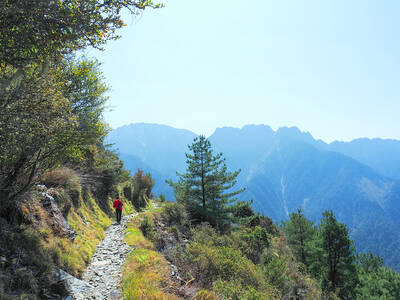
Jade Mountain (玉山) — Taiwan’s highest peak — is the ultimate goal for those attempting a through-hike of the Mountains to Sea National Greenway (山海圳國家綠道), and that’s precisely where we’re headed in this final installment of a quartet of articles covering the Greenway. Picking up the trail at the Tsou tribal villages of Dabang and Tefuye, it’s worth stocking up on provisions before setting off, since — aside from the scant offerings available on the mountain’s Dongpu Lodge (東埔山莊) and Paiyun Lodge’s (排雲山莊) meal service — there’s nowhere to get food from here on out. TEFUYE HISTORIC TRAIL The journey recommences with